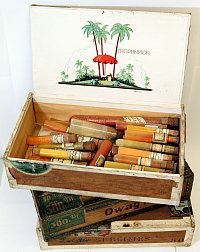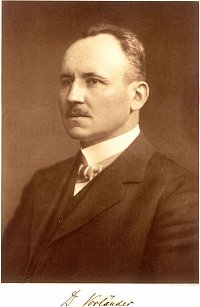Contact
Prof. Dr. Carsten Tschierske
phone: 0345 5525664
carsten.tschierske@chemie.u...
Institute of Chemistry
06099 Halle (Saale)
Login for editors
Thinking ahead with liquid crystals
CARSTEN HECKMANN
No, liquid crystals weren’t invented by someone from Halle. They were discovered by an Austrian. However, thanks to the vision of some pioneers from Halle we are now able to swipe our fingers over our smartphones and be excited by the picture quality of our new LCD television. Research into liquid crystals was an MLU speciality - and still is.
Daniel Vorländer studied “an oddity that either wasn’t referred to in textbooks or that was thought to be erroneous”. However he knew that the crystalline liquid “would have a future”. This can be read in the obituary of this prominent chemist from Halle which appeared in 1943, two years after his death. Its author was Professor Conrad Weygand from Leipzig. Here he was able to demonstrate his prophetic ability as it would take about 20 years to develop a precursor for something which, today, millions of people cannot go without: liquid crystal displays.

Carefully packed and labelled: Daniel Vorländer stored his liquid crystal compounds in hundreds of cigar boxes. Today the Institute of Chemistry on the Weinberg Campus is in possession of some of these. (Photo: Maike Glöckner)
In the city on the Saale river it is often referred to as “an invention from Halle”. Not true. However, it wouldn’t have come to be without Halle’s researchers. “If you have a look at what has been designed and carried out in the last few decades, you have to admit that Vorländer somehow played a part in all of this,” says Carsten Tschierske. The chemistry professor is the current representative of a whole line of liquid crystal researchers brought forth by Martin Luther University. His academic supervisor, Horst Zaschke, is just one example, along with Horst Sackmann and Dietrich Demus who can boast the patent record at MLU. “Without a doubt our university was the leader in this field for many years,” says patent assessor Gisela Wissenbach. “We have issued licenses for many inventions, including to Japan.”

Daniel Vorländer was the first chemist to systematically synthesize liquid crystals. (Image: university archives)
But Vorländer? An inventor? “Who if not him?” asks Carsten Tschierske rhetorically. Other people discovered liquid crystals. Friedrich Reinitzer and Otto Lehmann were the first to describe the substances which existed in a state between a crystalline solid and a liquid. Not someone from Halle. “Vorländer was the one to systematically synthesize liquid crystals. Around 2,000 liquid crystal compounds originate from him – before that there were 20 or 30,” Tschierske reports. “The first clock displays were produced using substances which were the result of Vorländer’s work. And even today, some displays contain substances that were developed at some point in time by researchers from Halle.”
We have Daniel Voränder to thank for the basic connection between the molecular structure and the liquid crystal properties. It was just that his findings at that time were scientific curiosities. “No one knew what to do with them. It was basic research,” says Tschierske, himself a basic research scientist, even though he registered around 20 patents in the course of getting his doctorate.
Today, industry is carrying out material development for displays. “This is fine-tuning, optimisation. That’s not the job of the university,” says the 59-year-old. “We are interested in new application opportunities. The liquid crystal state is not only relevant for displays. Optical modulators and organic photovoltaics are unimaginable without liquid crystals. In any case we’re talking about a completely general organisational concept found in nature.” One good example is the DNA in a cell’s nucleus. “It wouldn’t fit in there if it wasn’t in a liquid crystal state.” Even cell membranes consist of a thin layer with liquid crystalline properties.
The combination of order and mobility is indispensible for producing life. In 2011 Carsten Tschierske and his team, in cooperation with international research groups, described in the renowned scientific journal “Science” how molecules are able to spontaneously organize themselves into highly complex liquid crystal structures. Two years earlier they were devoting themselves to studying banana-shaped liquid crystals and their surprising properties. Tschierske considers ideas about possible applications to be speculative. “We are performing basic research, creating new molecules in order to see how they organize themselves.” Some may find it strange. Maybe they are unaware of the example set by Vorländer.
